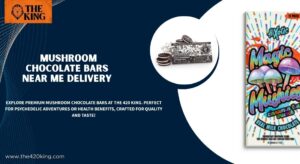
Creating expressive and detailed sketches relies heavily on the type of sketching materials used. These tools aren’t just accessories—they are extensions of an artist’s intent, offering precision, subtlety, and depth to every line and shade. Whether you’re a seasoned illustrator or a passionate beginner, understanding the wide range of sketching materials and how to use them creatively can elevate your work to new levels.
Let’s unravel the mystery behind the question: Which sketching materials let artists shade like pros but vanish when needed without erasers? The answer lies not in a single product, but in how the right combination of tools, techniques, and surfaces work together. Surprisingly, one of the most versatile tools in this context is the graphite pencil, especially when paired with kneaded erasers, blending stumps, and textured sketch paper. But there’s more.
The Hidden Magic of Water-Soluble Sketching Materials
Among the lesser-known tools are water-soluble pencils and graphite sticks, which allow for easy blending and can even be faded or erased with a damp brush or sponge. These materials respond to water, making it possible to “erase” shaded areas by softening them with moisture. This unique property opens the door to more flexible techniques for shading, highlighting, and correction—especially valuable during the sketching phase of larger compositions or detailed illustrations.
These types of sketching materials are especially popular among illustrators and concept artists who need both precision and the ability to modify or remove elements without damaging the paper.
Exploring the Essentials: Core Sketching Materials
Whether you prefer classical pencil sketching or modern mixed-media styles, there are core sketching materials every artist should explore:
1. Graphite Pencils
Graphite pencils are available in a range of hardness levels—from 9H (hardest) to 9B (softest). Hard pencils create crisp lines for detailed work, while soft pencils provide dark, rich shading. Artists often carry an entire set to achieve gradient effects in their artwork.
2. Charcoal
For dramatic contrast and deep blacks, charcoal remains unmatched. Available in compressed sticks, pencils, and vine form, it offers intense richness and bold strokes. While harder to control than graphite, it’s a favorite for figure sketching and expressive work.
3. Colored Pencils
Colored pencils aren’t just for coloring books. Professional-grade colored pencils offer rich pigments and blendability. They’re essential for artists working in colored sketch styles, especially in fashion illustration, landscape studies, and portraiture.
4. Mechanical Pencils
Ideal for consistent line work and fine detail, mechanical pencils are favored by designers and technical illustrators. They maintain a constant line width, which is perfect for architectural sketches, character design, and line-heavy illustrations.
5. Blending Tools
Tortillons (paper stumps), chamois cloths, and blending brushes help transition between tones and smooth out lines. Used properly, they can mimic gradients and textures that are usually possible only through digital tools.
6. Erasers Beyond Basics
While traditional rubber erasers serve their purpose, kneaded erasers and precision eraser pencils bring more control. They let artists “draw with light” by lifting graphite selectively, and when used with water-soluble pencils, can almost erase shading without residue.
Surfaces That Interact With Sketching Materials
Paper plays a critical role in how sketching materials behave. Rough-textured paper holds more pigment and works well for charcoal or pastels, while smooth paper supports clean lines with mechanical or fine graphite pencils. Using toned paper also adds an interesting dimension, letting white pencils act as highlighters and adding natural contrast to the artwork.
Choosing the right surface amplifies the performance of sketching materials. For example, using water-soluble pencils on watercolor paper lets artists shade, blend, and wash out parts of the sketch, recreating that “erase without eraser” effect.
Specialty Sketching Materials That Unlock Creativity
In recent years, sketching materials have expanded into unique tools:
-
Watercolor Pencils – They work dry for precision and come to life with a touch of water.
-
Graphite Powder – Applied with brushes or fingers, it’s perfect for backgrounds and large-scale shading.
-
White Charcoal – When used on black or toned paper, it adds an ethereal glow and serves as a highlighter.
-
Ink Pens with Water-Soluble Ink – Allow for controlled shading and fade effects when water is applied.
Each of these adds an edge to the creative process, helping artists explore new possibilities and redefine sketching norms.
The Role of Sketching Kits
A well-assembled sketching kit bundles essential sketching materials for all levels of artists. These kits often include multiple graphite pencils, charcoal, a blending stump, erasers, and a sketchpad. Some advanced kits incorporate water brushes, ink pens, or pastel pencils for more elaborate sketches. Investing in a complete kit not only ensures creative freedom but also saves time when experimenting with techniques.
Why It All Matters
Sketching isn’t just about replicating what’s seen—it’s about interpreting the world through lines, shadows, and forms. The selection of sketching materials directly influences how an artist interprets that vision. For example, the softness of a 6B pencil allows for quick shadow rendering, while the hard lines of a 2H are ideal for architectural forms. Each material brings its own texture and flow, encouraging experimentation.
More importantly, sketching materials empower artists to correct their work, layer textures, and emphasize areas—all without digital tools or post-processing. For those who wonder how some artists seem to erase shaded areas like magic, the trick lies in understanding their materials.
Promotional Insight
If you’re looking to upgrade your toolset, explore curated collections of sketching materials that cater to hobbyists and professionals alike. From graphite and charcoal to unique water-soluble blends, having a diverse range of tools unlocks creative freedom. Whether you sketch portraits, landscapes, comics, or abstract art, choosing the right materials can transform your sketches into compelling works of expression.
Explore art supply stores or online platforms offering artist-approved kits, sketchpads, and accessories. Look for brands that emphasize quality, durability, and variety. Whether you’re restocking or just starting, the right sketching materials are worth every pencil stroke.
Final Thoughts
The world of sketching materials is vast, dynamic, and full of hidden surprises. From graphite to water-soluble blends, artists can now shade, blend, and even erase without the traditional eraser—all thanks to the evolving tools at their fingertips. It’s not about having the most tools, but about understanding them deeply. Dive into your artistic practice with confidence, experiment with your materials, and let your sketches speak for themselves—line by line, shade by shade.





